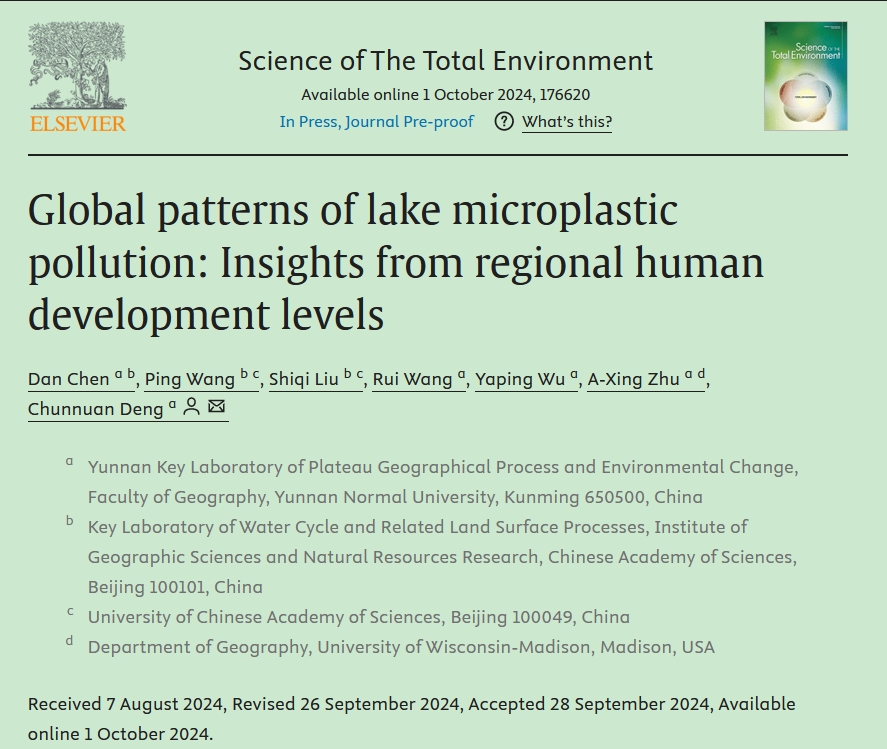博文
云师大地理学部邓春暖教授在top期刊《Science of The Total Environment》发表研究成果
||
2024年10月1日,Elsevier 旗下top期刊《Science of The Total Environment》在线发表了云南师范大学地理学部邓春暖副教授最新研究成果《Global patterns of lake microplastic pollution: Insights from regional human development levels》。第一作者为云南师范大学地理学部邓春暖副教授。合作单位有中国科学院地理科学与资源研究所水循环及相关陆面过程研究所重点实验室、美国威斯康星大学麦迪逊分校(University of Wisconsin–Madison)地理学部。
https://www.sciencedirect.com/science/article/abs/pii/S0048969724067767

Abstract
Microplastics have emerged as a pervasive pollutant across various environmental media. Nevertheless, our understanding of their occurrence, sources, and drivers in global lakes still needs to be completed due to limited data. This study compiled data from 117 studies (2016–May 2024) on microplastic contamination in lake surface water and sediment, encompassing surface water samples in 351 lakes and lake sediment samples in 200 lakes across 43 countries. Using meta-analysis and statistical methods, the study reveals significant regional variability in microplastic pollution, with concentrations ranging from 0.09 to 207,500 items/m3 in surface water and from 5.41 to 18,100 items/kg in sediment. Most microplastics were under 1 mm in particle size, accounting for approximately 79 % of lake surface water and 76 % of sediment. Transparent and blue microplastics were the most common, constituting 34 % and 21 % of lake surface water and 28 % and 18 % of sediment, respectively. Fibers were the dominant shape, representing 47 % of lake surface water and 48 % of sediment. The primary identified polymer types were polyethylene (PE), polypropylene (PP), and polyethylene terephthalate (PET). Countries like India, Pakistan, and China had higher contamination levels. Positive correlations were found between microplastic abundance in surface water and factors like human footprint index (r = 0.29, p < 0.01), precipitation (r = 0.21, p < 0.05), and net surface solar radiation (r = 0.43, p < 0.001). In contrast, negative correlations were observed with the human development index (r = −0.61, p < 0.01) and wind speed (r = −0.42, p < 0.001). In sediment, microplastics abundance correlated positively with the human footprint index (r = 0.45, p < 0.001). This study underscores the variability in microplastic pollution in global lakes and the role of human activities and environmental factors, offering a valuable reference for future research.
扩展阅读:
https://blog.sciencenet.cn/blog-454141-1453788.html
上一篇:云师大化工学院刘丰祎教授、张旭锋副教授在《Journal of Rare Earths》上发表最新研究成果
下一篇:云师大地理学部王金亮教授在top期刊《Ecological Indicators》上发表研究成果